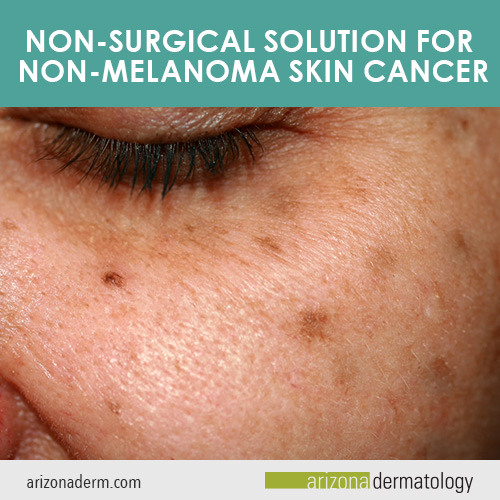 Non-melanoma skin cancer affects over 5.4 million individuals in the U.S. each year. Among the most common non-melanoma skin cancers are basal cell carcinomas and squamous cell carcinomas, which are traditionally treated with Mohs surgery. However, an alternative, non-surgical approach exists that offers high cure rates without the associated risks and discomfort.
Non-melanoma skin cancer affects over 5.4 million individuals in the U.S. each year. Among the most common non-melanoma skin cancers are basal cell carcinomas and squamous cell carcinomas, which are traditionally treated with Mohs surgery. However, an alternative, non-surgical approach exists that offers high cure rates without the associated risks and discomfort.
Superficial Radiotherapy, or SRT, is an FDA-approved method for removing non-melanoma skin cancers like basal and squamous cell carcinomas. Unlike with Mohs surgery, there is no cutting, bleeding, or stitches. And while conventional radiation therapies use X-rays or other high-dose radiation forms, SRT employs electron beam radiation that penetrates just 5mm below the skin’s surface.This allows the treatment to destroy cancer cells in the targeted area without affecting adjacent tissues.
Why SRT for skin cancer removal is gaining favor:
There are a lot of reasons why dermatologists and patients alike are choosing SRT. Here are the top benefits.
Safety and Efficacy: SRT has a long history, dating back to its introduction in the 1960s for treating basal and squamous cell carcinomas. Today, it enjoys a resurgence and widespread acceptance as a reliable treatment option, with cure rates ranging from 90% to 98%.
Minimal Scarring: SRT is especially advantageous when the skin cancer is located near sensitive areas like the eyes, nose, lips, or ears. Unlike surgery, SRT eliminates the need for skin grafts or reconstructive surgery.
Quick and Painless: SRT treatments, performed right in our office, are swift and painless, contrasting with the time-consuming nature of Mohs surgery. Surgical interventions often require local anesthesia, causing discomfort throughout the healing process, while SRT offers a pain-free experience.
Avoiding Surgical Complications: With SRT, you can sidestep anesthesia, incisions, and stitches, mitigating the risks of nerve damage and infections that surgical procedures can pose.
No Downtime: SRT doesn’t demand any downtime. You can return to your daily routine right after the procedure and experience a faster healing process compared to surgery.
The SRT treatment process:
While SRT sessions are relatively quick, you will have to come in multiple times in order to complete your treatment. As with other radiation therapies, you will need treatment two to three times a week over a span of three to six weeks, depending on the cancer’s size and location and the desired cosmetic outcome. Typically, patients will undergo between 10 and 30 sessions.
SRT’s setup phase takes longer than the treatment itself, which only takes about 60 seconds to deliver. Protective shields are used to cover the skin and surrounding structures in the treatment area. Your doctor will monitor the cancer’s regression and adapt each therapy session accordingly.
SRT is virtually painless. Minor side effects may include redness, dryness, or itching resembling a sunburn at the treatment site. These usually subside within two to four weeks after the treatment is completed.
SRT Candidates:
It’s important to note that SRT isn’t suitable for everyone. This method is not recommended for patients who have or have had melanoma. The American Academy of Dermatology guidelines recommend SRT as a viable secondary option for basal and squamous cell skin cancers that are very visible, such as on the eyelid, nose or other areas of the face, or for patients who cannot tolerate surgery. SRT may not be recommended for younger patients because of the possibility of the development of future skin cancers in the treated area. That said, the benefits of SRT may outweigh any risks. Consult with one of our dermatologists to determine whether SRT is the right choice for you.


